Safa Suleman El Faituri1*
1Professor of Dermatology, Medical faculty, Benghazi University, Iran
*Corresponding Author: Safa Suleman El Faituri, Professor of Dermatology, Medical faculty, Benghazi University, Iran; E-mail: selfaitoury@yahoo.co.uk
Published Date: 22-06-2022
Copyright© 2022 by Faituri SSE. All rights reserved. This is an open access article distributed under the terms of the Creative Commons Attribution License, which permits unrestricted use, distribution, and reproduction in any medium, provided the original author and source are credited.
Abstract
Introduction and aim: Getting an accurate diagnosis in dermatopathology requires a combination of clinical and pathological information. Our aim was to assess the importance of the correlation between clinical and histopathological diagnosis in various cutaneous diseases.
Materials and Methods: One-hundred cases of variable skin diseases were studied clinically by dermatologist and histopathologically by general pathologists. Cliniopathological correlation was done by direct communication between the dermatologist and the pathologist.
Results: Concordance between pathological and clinical diagnoses was seen in 84%, a new pathological diagnosis was issued in 3% and non-diagnostic report in 13 %. After clinicopathological correlation; out of 84%, we accept only 65% as final diagnosis. In addition, the correlation was helpful and provide a diagnosis in another 20% of cases. One new pathological diagnosis was accepted whereas in the remaining cases (14%) further workup were required.
Conclusions: Accurate diagnosis of cutaneous disorders depends on clinical skills as well as careful histopathological assessment and best results can be obtained if the patient and biopsy sections are viewed together. Electron microscopy, immunofluorescence assay, immunohistochemistry techniques and molecular pathology are important adjuncts for definite diagnosis of many skin diseases.
Keywords
Kin Biopsy; Dermatopathology; Haematoxylin; Skin Disorders
Introduction
Although the diagnosis of skin diseases depends mainly on clinical information, taking skin biopsy for histopathological examination may be necessary due to the overlapping in the clinical picture between some skin diseases [1]. Skin biopsy is a primary technique in dermatology to obtain diagnostic information, it is free of complications and gives informative results in high proportion of cases. Dermatopathology involves the microscopic examination of the skin biopsy. The procedure from skin biopsy to a histologic diagnosis is complex. The dermatologist role include skin examination, biopsy taking as well as reviewing the results with the pathologist [2-5]. Correlation of clinical and pathologic findings is necessary to achieve final diagnosis which is always made by the clinician [3,6].
Objectives
Despite the importance of clinicopathological approach in the diagnosis of many skin conditions, only few studies have assessed the concordance between clinical, histopathological and final diagnoses of skin disorders. Our aim was to assess the importance of the correlation between clinical and histopathological diagnosis in various cutaneous diseases.
Materials and Methods
A total number of 100 patients were examined by a dermatologist in Jumhoria hospital skin department in Benghazi/Libya, over a period of 3 years. Skin biopsy was taken for them to confirm the diagnosis. Clinical data including history and lesion description was provided with histopathology request.
The specimens were routinely examined with Haematoxylin and Eosin stain by random general pathologists. Further techniques as special stains or immune staining were used when indicated and available. Cliniopathological correlation was done by direct communication between the dermatologist and the pathologist.
The clinical data, histopathological description as well as clinical, histopathological and final diagnoses were recorded. And the results were statistically analyzed.
Results
We have studied 100 cases with skin disease, clinically and histopathologically. They included inflammatory diseases and tumors (Table 1).
Concordance between pathological and clinical diagnoses was seen in 84%, a new pathological diagnosis was issued in 3% and non-diagnostic report in 13 % (pattern analysis in 5% and descriptive report in 8%) (Fig. 1). After clinicopathological correlation (Fig. 2) the results have been changed; among the cases whom pathological diagnosis matched the clinical diagnosis (84%), we accept only 65% as final diagnosis (Fig. 3,4). Final diagnosis of 14% obtained after the correlation, Fig. 5-10 demonstrate some cases with original clinical and initial pathological diagnosis as well as final diagnosis after clinicopathologic correlation. In the remaining 5% further workup were required for diagnosis. Among the new pathological diagnosis, we accept one diagnosis (Fig. 11), whereas the others were not consistent with the clinical picture and their final diagnosis were made after the correlation. Among the non-specific pathological reports; final diagnosis of 4 cases were obtained after clinicopathological correlation and in 9 cases further workup were required. Fig. 12-16 show cases need further investigations.

Figure 1: Histopathological outcome of the 100 skin biopsies.

Figure 2: Results in Figure 1 after clinicopathological correlation.

Figure 3: Acute hemorrhagic edema of infancy, clinical and pathological diagnosis concordance.

Figure 4: Juvenile xanthogranuloma, clinical and pathological diagnosis concordance

Figure 5: Basal cell carcinoma, final diagnosis after clinicopathlogical correlation.
Initial clinical diagnosis was trigeminal trophic syndrome or squamous cell carcinoma and pathological diagnosis was squamous cell carcinoma.

Figure 6: Lichen planus, final diagnosis after clinicopathlogical correlation. Pathological report was in concordance with initial clinical diagnosis of post inflammatory hyperpigmentation.

Figure 7: Demodicidosis, final diagnosis after clinicopathlogical correlation. Original clinical diagnosis as well as pathological diagnosis was acneiform eruption.

Figure 8: Erysipelas, final diagnosis after clinicopathlogical correlation. Pathological report was in concordance with initial clinical diagnosis of sweet syndrome.

Figure 9: Initial clinical diagnosis as well as pathological diagnosis was prebullous gestational pemphigoid.

Figure 10: Evolution to vasculitic lesions and after clinicopathlogical correlation, final diagnosis was urticarial vasculitis.

Figure 11: Nodular scabies, final diagnosis after clinicopathlogical correlation. Pathological report was in concordance with initial clinical diagnosis of rituximab induced drug eruption.

Figure 12: Milia in plaque, an accepted new pathological diagnosis.

Figure 13: Histiocytosis x, immunohistochemistry and electron microscopy are needed to confirm diagnosis.

Figure 14: Mycosis fungoides, need immunohistochemistry.

Figure 15: Granulomatous reaction pattern, needs further investigations as special stains.

Figure 16: Blistering disease with subepidermal blister, need further immunofluorescent study.
Category: | Diseases: | Cases number: |
Papulosquamous | Lichen planus Psoriasis Pityriasis rosea Pityriasis rubra pilaris | 12 9 1 1 |
Dermatitis | Contact dermatitis Nodular prurigo Stasis dermatitis | 2 2 1 |
Neoplasia | Basal cell carcinoma Mycosis fungoides Lymphomatoid papulosis Kaposi sarcoma | 4 4 2 1 |
Benign tumours | Seborrheic keratoses Syringoma | 3 2 |
Keratinization disorders | Ichthyosis | 3 |
Vascular | Vasculitis Pigmented purpura | 2 1 |
Connective tissue | Scleroderma Lupus erythematosus | 1 2 |
Infections | Scabies Ecthyma Erysipelas | 2 1 1 |
Pigment disorders | Ashy dermatosis Post inflammatory. | 2 2 |
Miscellaneous | Xanthogranuloma, mastocytosis, rosacea, acanthosis nigricans, pyoderma gangrenosum, ….etc | 25 |
Further investigations needed for final diagnosis | 14 | |
Total | 100 |
Table 1: Various skin diseases according to final diagnosis.
Discussion
In dermatology, skin biopsy and histopathological examination are essential for diagnosis of various skin tumors and inflammatory conditions [5,8-10].
We have studied 100 cases with skin disease, clinically and histopathologically. They included inflammatory and neoplastic disorders.
Concordance between pathological and clinical diagnoses was seen in 84%, after reviewing clinical and pathological results together, the concordance was only 65%. Without clinical knowledge, general pathologists have difficulty in cutaneous histopathological interpretation because many skin conditions have similar inflammatory reaction pattern, so they prefer to write consistent with rather than settling a definite diagnosis. For a higher rate of concordance between clinical and pathological results, interpretation of skin biopsy should carried out by a dermatopathologist who trained specifically in dermatopathology as well as in clinical dermatology [10]. Kutzner H, et al., found that the precision of a microscopic diagnosis is significantly increased by thorough knowledge of the clinical picture and Cerroni L, et al., concluded that clinical pictures when added to biopsy request of inflammatory skin disorders, they allow a better interpretation of histopathologic findings with an increase of 16.6% in the total number of correct diagnoses [11,12].
Although sometimes pathologists cannot establish a histopathological diagnosis, this can be useful, as it rules out the initial clinical diagnosis. Other important factors should be considered as biopsy site, time and technique [1]. Pathological results in this study, were unable to approve our clinical diagnosis or to afford a particular diagnosis in 13%; results were descriptive in 8 cases whereas the results of 5 cases provide a pathological pattern as psoriasiform and eczematous reaction.
There are only a limited histological reaction patterns for many skin conditions because skin responds to variable stimuli in a limited ways. The difference between these conditions may be a single histological feature. In addition, many inflammatory diseases do not show histological changes which allow a definite diagnosis [4,5,10].
Among the new pathological diagnosis (3%), we agreed on one diagnosis whereas the others were not consistent with the clinical picture and their final diagnosis were made after the correlation. This stresses the significance of clinicopathologic correlation [5,8,10]. In this study clinicopathologic correlation was helpful and provide a diagnosis in 20% of cases. Adding clinical pictures to biopsy request improve result accuracy [11,12]. Berman B, et al., found that inclusion of clinical data improves the histologic diagnosis and Massone, et al., suggested that absence of clinical information may delays accurate diagnosis [13,14].
- Fourteen percent of our cases required further workup including the use of electron microscopy, immunofluorescence assay, immunohistochemistry techniques and molecular pathology. The use of electron microscopy in dermatology is reduced due to development of other faster and cheaper techniques, however, it is still an excellent test in some skin diseases as epidermolysis bullosa [15]
- Immunofluorescence studies have an central role in diagnosing many immune-mediated skin disorders, especially autoimmune vesiculo-bullous diseases [16]. Immunohistochemistry has diagnostic and prognostic value in dermatopathology. It is an essential adjunct in the diagnosis of skin tumors as cutaneous T-cell lymphoma p [17]. Molecular diagnostics in dermatology improve the diagnosis as well as the treatment and prognosis. PCR is commonly used in diagnosis of cancer and infectious diseases [18].
Conclusion
Diagnosis of cutaneous disorders depends on expert clinical as well as histopathological evaluation and best results can be obtained if the patient and the biopsy sections are viewed together. Electron microscopy, immunofluorescence assay, immunohistochemistry techniques and molecular pathology are important adjuncts for definite diagnosis of many skin diseases.
Conflict of Interest
The authors declare that they have no conflict of interest.
References
- Sina B, Kao GF, Deng AC. Skin biopsy for inflammatory and common neoplastic skin diseases: optimum time, best location and preferred techniques. A critical review. J Cutan Pathol. 2009;36(5):505-10.
- Rajaratnam R, Smith AG, Biswas A. The value of skin biopsy in inflammatory dermatoses. Am J Dermatopathol. 2009;31(4):350-3.
- Metze D. From skin biopsy to diagnosis. Hautarzt. 2007;58(9):735-45.
- Anderson EB, Draft KS, Lee RA. Update in dermatopathology. Am J Clin Pathol. 2006;125:S50-70.
- Kerl H, Cerio R, Burg G. Dermatopathology. Euro J Dermatol. 2009;19(5):536-7.
- Yung A. Dermatopathology. DermNet NZ. ©2222. 2011.
- Brinster NK. Dermatopathology for the surgical pathologist: a pattern based approach to the diagnosis of inflammatory skin disorders (part I). Adv Anat Pathol. 2008;15(2):76-96.
- Kerl H, Stadler R. Dermatopathology in German-speaking Europe. Developments and perspectives. Hautarzt. 2007;58(9):730-4.
- Megahed M, Kind P, Schaller J. Dermatohistology laboratory. Hautarzt. 2006;57(9):792-800.
- Alsaad KO, Ghazarian D. My approach to superficial inflammatory dermatoses. J Clin Pathol. 2005;58(12):1233-41.
- Cerroni L, Argenyi Z, Cerio R. Influence of evaluation of clinical pictures on the histopathologic diagnosis of inflammatory skin disorders. J Am Acad Dermatol. 2010;63(4):647-52.
- Kutzner H, Kempf W, Schärer L. Optimizing dermatopathologic diagnosis with digital photography and internet. The significance of clinicopathologic correlation. Hautarzt. 2007;58(9):760-8.
- Massone C, Soyer HP, Lozzi GP. Feasibility and diagnostic agreement in teledermatopathology using a virtual slide system. HumPathol. 2007;38:546-54.
- Berman B, Elgart GW, Burdick AE. Dermatopathology via a stillimage telemedicine system: diagnostic concordance with direct microscopy. Telemed J. 1997;3:27-32.
- Hashimoto K. Diagnostic electron microscopy in dermatology. Dermatol Clin. 1994;12(1):143-59.
- Chhabra S, Minz RW, Saikia B. Immunofluorescence in dermatology. Indian J Dermatol Venereol Leprol. 2012;78(6):677-91.
- Fuertes L, Santonja C, Kutzner H. Immunohistochemistry in dermatopathology: a retrospective study of the most frequently used antibodies. Am J Dermatopathol. 2016;38(2):92-104.
- Brinster NK, Molecular diagnostics in dermatology and dermatopathology. 2015;72(6):E185.
Article Type
Research Article
Publication History
Received Date: 27-05-2022
Accepted Date: 15-06-2022
Published Date: 22-06-2022
Copyright© 2022 by Faituri SSE. All rights reserved. This is an open access article distributed under the terms of the Creative Commons Attribution License, which permits unrestricted use, distribution, and reproduction in any medium, provided the original author and source are credited.
Citation: Faituri SSE, et al. Clinicopathological Correlation in Dermatopathology. J Dermatol Res. 2022;3(2):1-12.
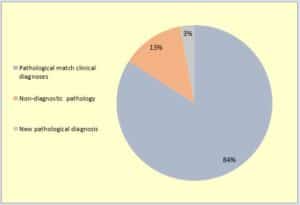
Figure 1: Histopathological outcome of the 100 skin biopsies.
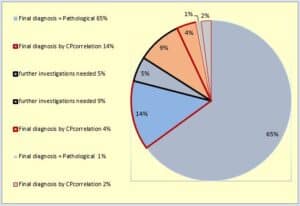
Figure 2: Results in Figure 1 after clinicopathological correlation.

Figure 3: Acute hemorrhagic edema of infancy, clinical and pathological diagnosis concordance.
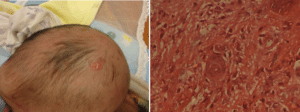
Figure 4: Juvenile xanthogranuloma, clinical and pathological diagnosis concordance
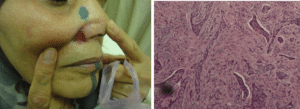
Figure 5: Basal cell carcinoma, final diagnosis after clinicopathlogical correlation.
Initial clinical diagnosis was trigeminal trophic syndrome or squamous cell carcinoma and pathological diagnosis was squamous cell carcinoma.
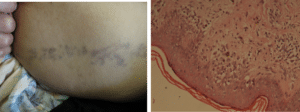
Figure 6: Lichen planus, final diagnosis after clinicopathlogical correlation. Pathological report was in concordance with initial clinical diagnosis of post inflammatory hyperpigmentation.

Figure 7: Demodicidosis, final diagnosis after clinicopathlogical correlation. Original clinical diagnosis as well as pathological diagnosis was acneiform eruption.
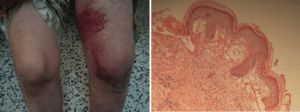
Figure 8: Erysipelas, final diagnosis after clinicopathlogical correlation. Pathological report was in concordance with initial clinical diagnosis of sweet syndrome.

Figure 9: Initial clinical diagnosis as well as pathological diagnosis was prebullous gestational pemphigoid.
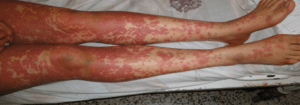
Figure 10: Evolution to vasculitic lesions and after clinicopathlogical correlation, final diagnosis was urticarial vasculitis.
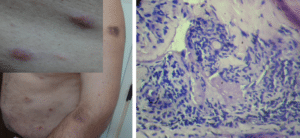
Figure 11: Nodular scabies, final diagnosis after clinicopathlogical correlation. Pathological report was in concordance with initial clinical diagnosis of rituximab induced drug eruption.
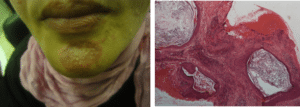
Figure 12: Milia in plaque, an accepted new pathological diagnosis.
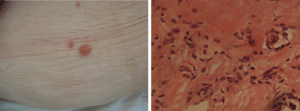
Figure 13: Histiocytosis x, immunohistochemistry and electron microscopy are needed to confirm diagnosis.
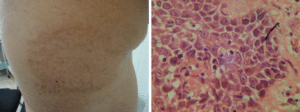
Figure 14: Mycosis fungoides, need immunohistochemistry.
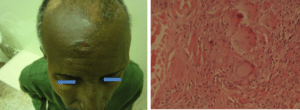
Figure 15: Granulomatous reaction pattern, needs further investigations as special stains.
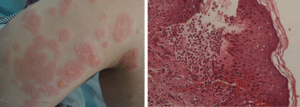
Figure 16: Blistering disease with subepidermal blister, need further immunofluorescent study.
Category: | Diseases: | Cases number: |
Papulosquamous | Lichen planus Psoriasis Pityriasis rosea Pityriasis rubra pilaris | 12 9 1 1 |
Dermatitis | Contact dermatitis Nodular prurigo Stasis dermatitis | 2 2 1 |
Neoplasia | Basal cell carcinoma Mycosis fungoides Lymphomatoid papulosis Kaposi sarcoma | 4 4 2 1 |
Benign tumours | Seborrheic keratoses Syringoma | 3 2 |
Keratinization disorders | Ichthyosis | 3 |
Vascular | Vasculitis Pigmented purpura | 2 1 |
Connective tissue | Scleroderma Lupus erythematosus | 1 2 |
Infections | Scabies Ecthyma Erysipelas | 2 1 1 |
Pigment disorders | Ashy dermatosis Post inflammatory. | 2 2 |
Miscellaneous | Xanthogranuloma, mastocytosis, rosacea, acanthosis nigricans, pyoderma gangrenosum, ….etc | 25 |
Further investigations needed for final diagnosis | 14 | |
Total | 100 |
Table 1: Various skin diseases according to final diagnosis.


